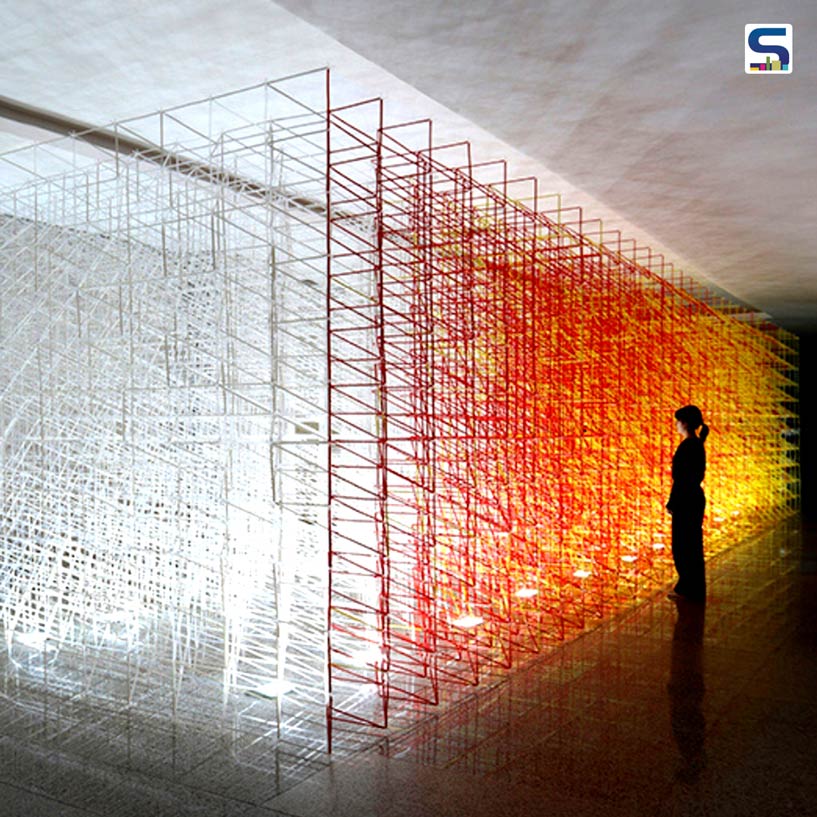
The environmental conversation around single-use plastics has been ongoing for years, and one of the most visible symbols of this crisis has been the drinking straw. What once seemed like an insignificant convenience item has come to represent the broader issue of unchecked plastic consumption. Public awareness campaigns, viral videos, and shocking images, particularly of turtles struggling to breathe because of straws lodged in their nostrils, struck a chord worldwide. This emotional trigger led to a cultural shift, with restaurants, cafes and households increasingly turning toward alternatives such as paper straws, reusable metal straws, edible straws or in some cases, eliminating the use of straws altogether. Yet despite this heightened awareness, the problem persists. Millions of single-use plastic straws are still produced, consumed and discarded every day, many of them ending up in landfills, waterways and oceans. The contradiction between our awareness of the harm and our continued reliance on disposable items highlights the urgent need for more innovative, thought-provoking approaches to sustainability.
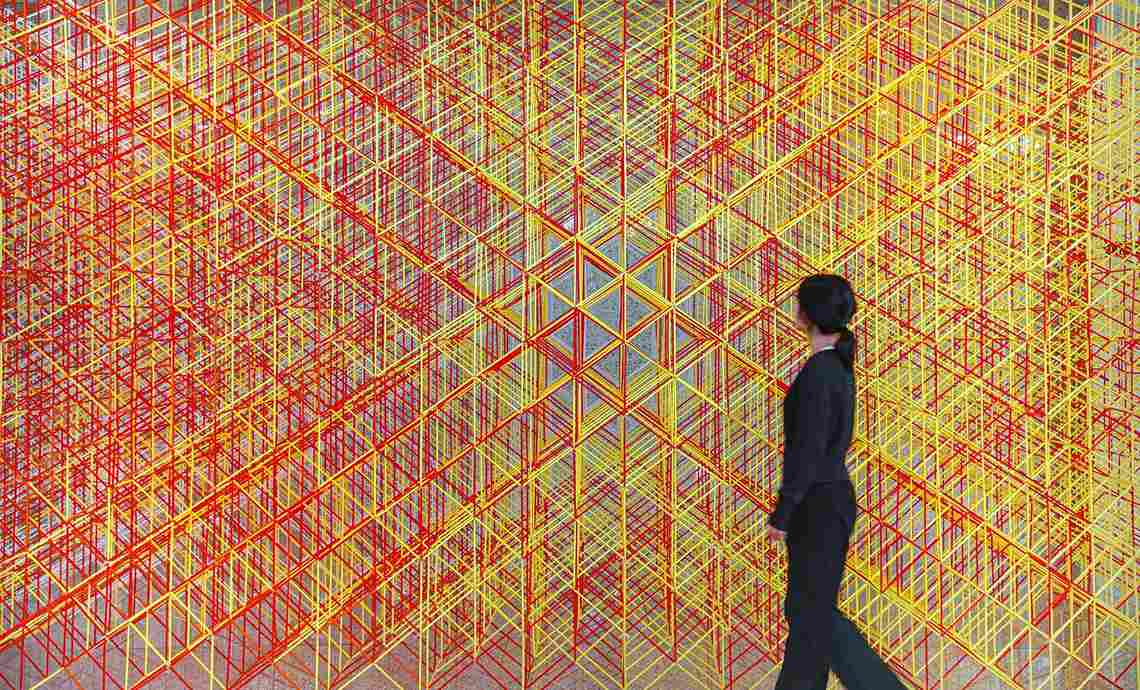
The porous quality of the straw grid allows sunlight and artificial lighting to filter through, producing dynamic patterns of light and shadow that shift as viewers move around and within the installation.
One such response comes from A+U Lab, an experimental design practice that has taken a bold and imaginative step by rethinking how we engage with plastic waste. Their project, aptly titled 41,415 Straws, is not just an art installation but a striking convergence of sustainability, design and social commentary. Located in Busan, South Korea, the temporary structure makes use of precisely 41,415 discarded plastic drinking straws, an exact figure that underlines the scale of the waste problem while simultaneously celebrating the potential of creative reuse. By repurposing something as commonplace and environmentally damaging as straws, the installation transforms waste into an immersive experience, compelling viewers to confront the consequences of their consumption habits. Know more about this global trend where art and design intersect with activism on SURFACES REPORTER (SR).
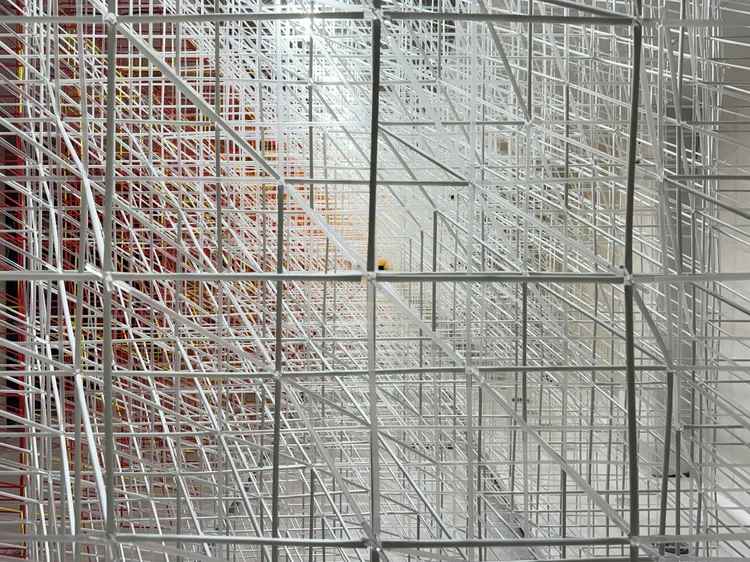
The straws are meticulously arranged in a square-on-diagonal grid system, their placement and stability enabled by custom-designed, laser-cut acrylic joints.
From trash to art
At first glance, the 41,415 Straws installation captivates with its sheer vibrancy and scale. The thousands of straws, in bold hues of red, yellow, orange and white, are assembled into a prism-like volume that stretches an impressive 11.4m in length, 3m in width and 2.75m in height. The choice of colours lends the work a playful energy, even as it delivers a sobering message about environmental degradation. This tension between the whimsical appearance and the serious subject matter ensures the installation resonates on multiple levels, drawing in audiences visually while also encouraging reflection on the larger issues at hand.
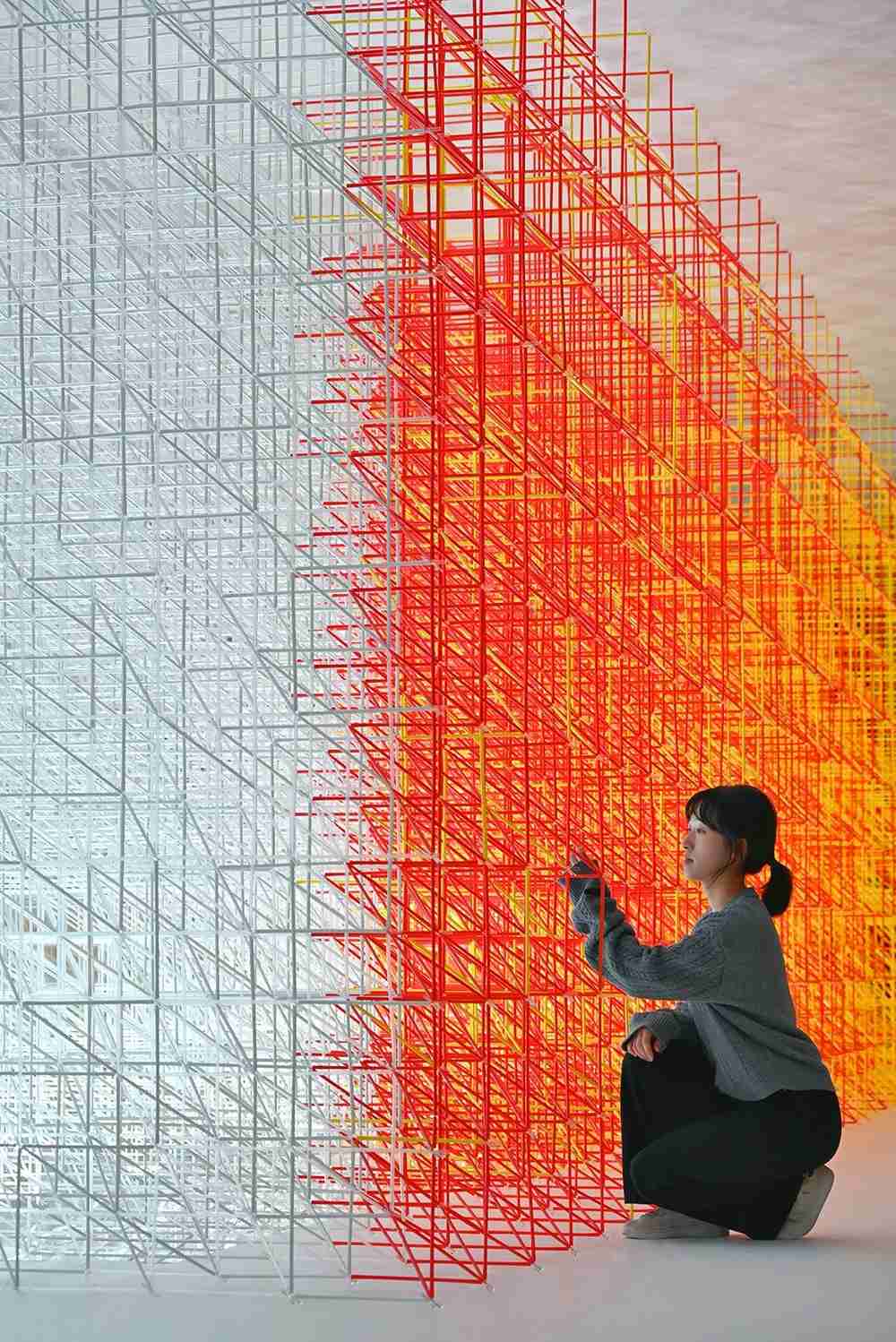
The thousands of straws, in bold hues of red, yellow, orange and white, are assembled into a prism-like volume that stretches an impressive 11.4m in length, 3m in width and 2.75m in height.
The design itself is a feat of both creativity and engineering. The straws are meticulously arranged in a square-on-diagonal grid system, their placement and stability enabled by custom-designed, laser-cut acrylic joints. These joints serve a dual purpose as they maintain the structural integrity of the piece while also allowing for easy assembly, disassembly and transport. In other words, the work has been designed with mobility in mind, enabling it to travel to different locations and engage with new audiences without losing its impact. This flexibility reflects the project’s underlying philosophy of sustainability, not only in terms of recycling and repurposing materials but also in ensuring that the message can be shared widely.
Another fascinating aspect of 41,415 Straws is its interaction with light. The porous quality of the straw grid allows sunlight and artificial lighting to filter through, producing dynamic patterns of light and shadow that shift as viewers move around and within the installation. This interactivity deepens the immersive quality of the work, reminding audiences that environmental issues are not static but constantly evolving, shaped by our daily choices and actions. A+U Lab’s installation is far more than an aesthetic exercise; it is a powerful commentary on plastic waste and consumer culture.
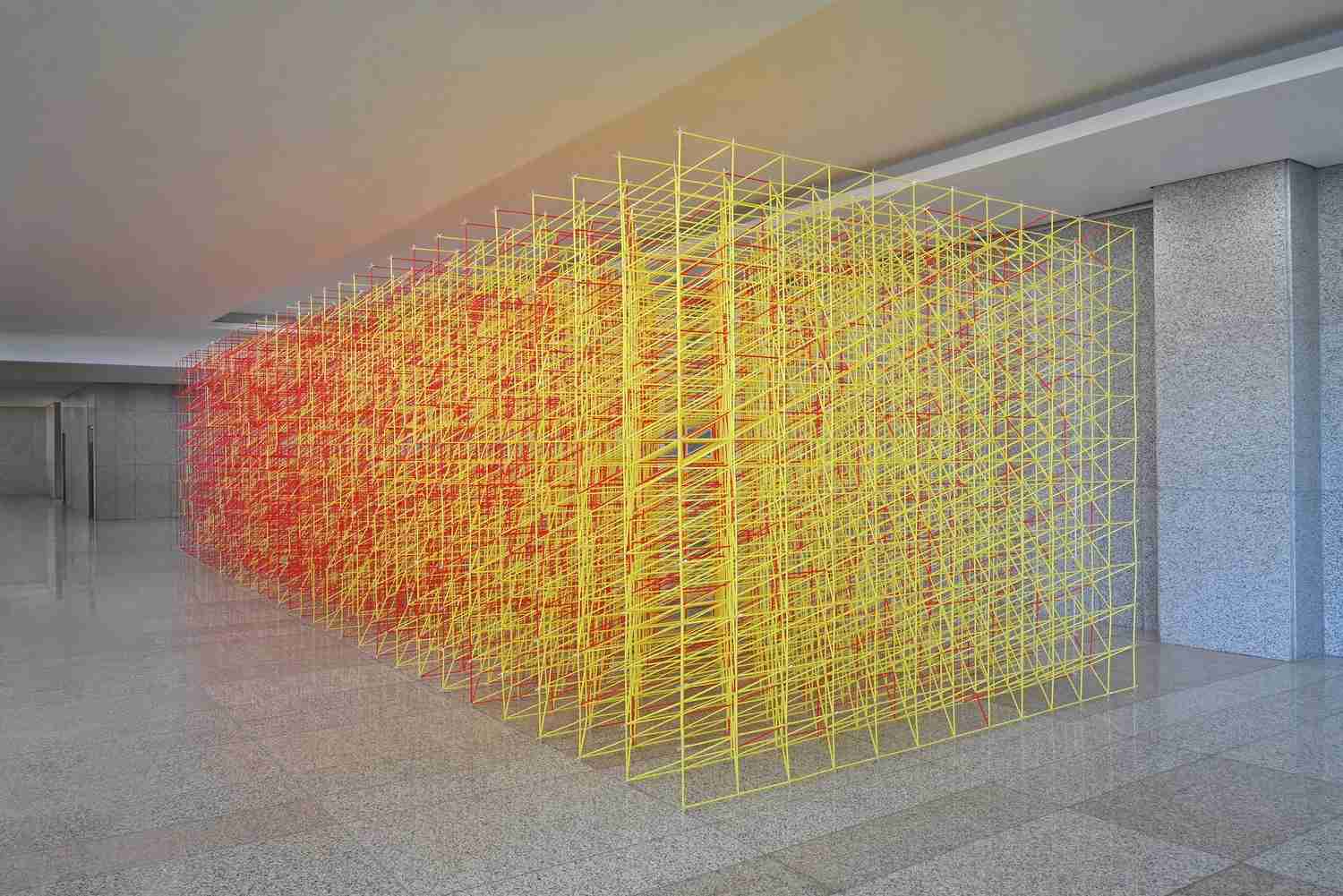
Their project, aptly titled 41,415 Straws, is not just an art installation but a striking convergence of sustainability, design and social commentary.
Project details
Type: Installation
Project team: Lawrence Kim, Eunji Choi, WooJin Choi, DaeUn Gam, SeungGu Kang, JongO Kim, BeomJun Lee, HeonJu Lee, WonSeok Lee, JiHo Paeng, JuYeon Ryu, Sevde Sevinc Seo, SeungChul Shin, JungHo Yeom and JuHae Yu
Award: Design Award of Honor, Society of American Registered Architects Design Awards, SARA New York Council, USA, 2025
Image credit: A+U Lab